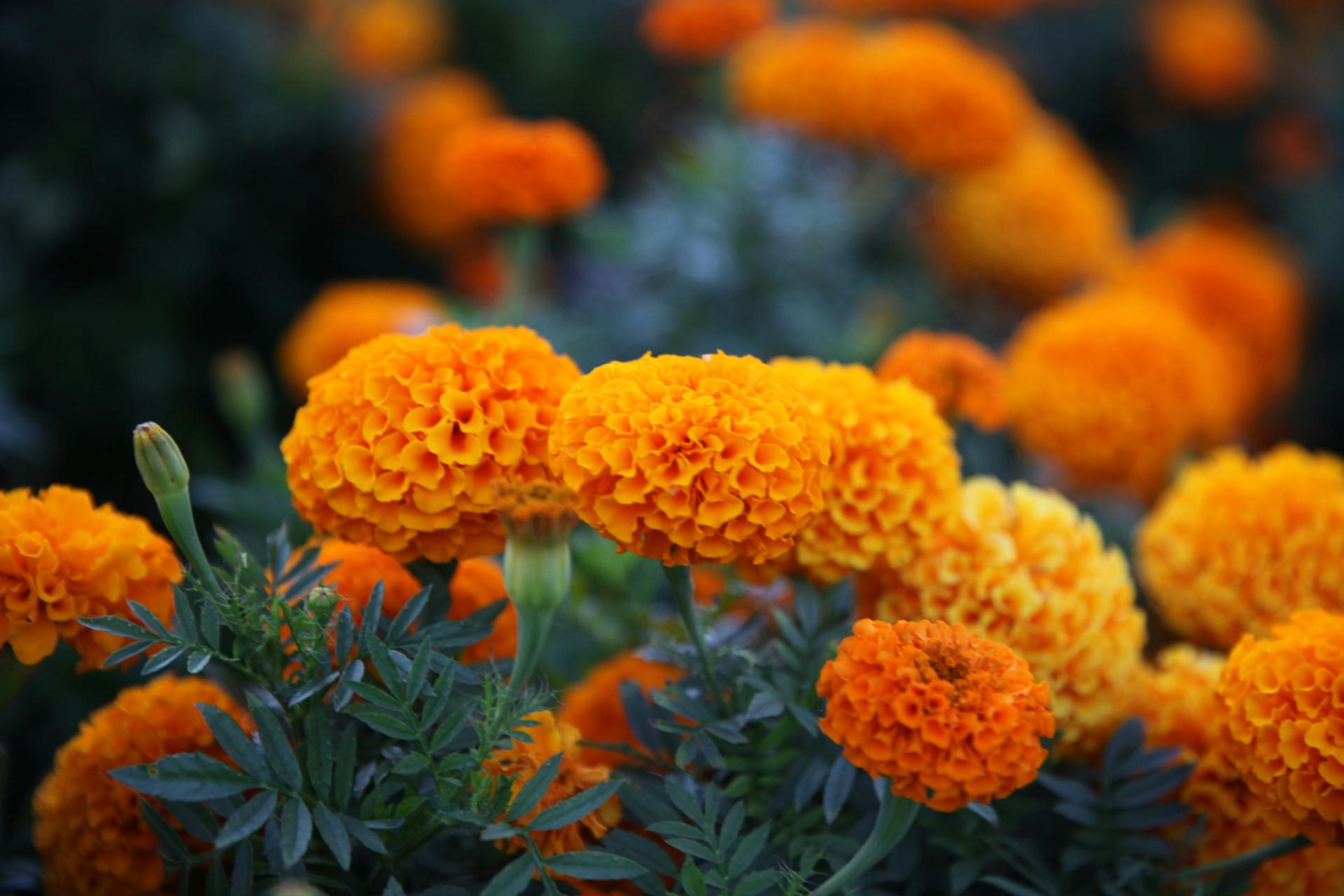You are here
Be a Better Gardener: Annuals With Style
Be a Better Gardener: Annuals With Style
By Thomas Christopher
This is the time of year when gardeners in the North Country (especially procrastinators like me) start thinking about annual flowers. So we run down to the garden center and buy a couple of six packs of seedlings to add a shot of color to the holes in our landscaping. And maybe we pick up a packet or two of some fast-growing, heat-loving annuals such as marigolds or zinnias, natives of Central America which flourish even after the summer weather settles in.
Annuals, in short, are too often the Rodney Dangerfield of flower gardening – I know that reference dates me, but I’ll bet you also remember his trademark complaint that “I don’t get no respect.” Even those of us who use annuals routinely tend to view them as second best, what you resort to when your perennial flowers have failed. That’s a mistake, because if you examine the intrinsic qualities of annuals, you’ll find that they offer unique potential for self-expression and beauty.
This truth was revealed to me by my mentor from my days as a horticultural student at the New York Botanical Garden, Mike Ruggiero. Mike is surely the most skilled and versatile gardener I have ever met. In his long career at that institution, Mike mastered everything from hybridizing orchids and daylilies to the cultivation of native plants (decades before the rest of the country woke up to their appeal and importance) and supervising the planting and care of NYBG’s extraordinary rose garden.
Mike was, and still is, a tireless educator. Today, although officially retired, he returns to the botanical garden four days a week to teach basic horticultural techniques to aspiring gardeners and horticulturists. In my day, the tuition was informal. Mike was the Native Plants Gardener then and he invited me into his domain to introduce me to the cultivation of wildflowers and the concept of planting in habitats. He showed amazing patience as I also peppered him with questions about almost every other aspect of the craft. The months I spent with Mike made me understand how endlessly fascinating gardening could be.
I stayed in touch with Mike after graduation, following his moves around the NYBG campus as he took on an endless series of different challenges. One such move was when he began managing and continually redesigning the Botanical Garden’s two parallel annual borders. These flanked a path and were enormous. The border on the path’s sunny side stretched 220 feet and was 10 feet deep; the shady border across the path was 125 feet long and 5 feet deep.
Mike began this venture by expanding the definition of this class of plants. Botanically, an annual is any flowering plant that sprouts from seed, and bears flowers, and dies all within the span of one growing season. Gardeners have added to this flowers such as impatiens that may be perennials in their tropical homelands but which cannot survive northern winters and so die at the end of the growing season.
Mike decided this meant that any plant he found decorative that would not survive a New York winter outdoors qualified for his borders. He began borrowing citrus trees from the greenhouses to serve as focal points for annual displays, mixing them up with giant, red-leaved castor beans and ornamental grasses, and then infilling with a kaleidoscope of brilliant flowers that he and the other gardeners grew from seed. These borders soon became the talk of the New York gardening scene.
Mike still urges students to be bold with annuals. Because it takes at least three years typically for perennial flowers to mature, you may be loath to take risks with a perennial border. But annuals? These mature in just weeks and, if you grow them from seed, cost so little money, you can feel free to explore with them the outer limits of your creativity. Color combinations that more sober souls have warned you will clash? Go ahead and try them, and if you don’t like the result — here Mike stomps with his foot as if crushing an offending flower. Just replant, he adds, soon you’ll have something different.
Eventually, I co-wrote a book with Mike, Annuals With Style. In the 22 years since its publication, the cultivars Mike recommended then have long since been replaced by newer introductions. But the philosophy and horticultural techniques he recommended are as fresh as ever. But if you’d rather plant than read, just dive in. Because annuals were made for experimentation.
Be-a-Better-Gardener is a community service of Berkshire Botanical Garden, located in Stockbridge, Mass. Its mission, to provide knowledge of gardening and the environment through a diverse range of classes and programs, informs and inspires thousands of students and visitors each year. Thomas Christopher is a volunteer at Berkshire Botanical Garden and is the author or co-author of more than a dozen books, including Nature into Art and The Gardens of Wave Hill (Timber Press, 2019). He is the 2021 Garden Club of America's National Medalist for Literature, a distinction reserved to recognize those who have left a profound and lasting impact on issues that are most important to the GCA. Christopher’s companion broadcast to this column, Growing Greener, streams on WESUFM.org, Pacifica Radio and NPR and is available at berkshirebotanical.org/growinggreener.
Help Our Garden Grow!
Your donation helps us to educate and inspire visitors of all ages on the art and science of gardening and the preservation of our environment.
All Donations are 100% tax deductible.


